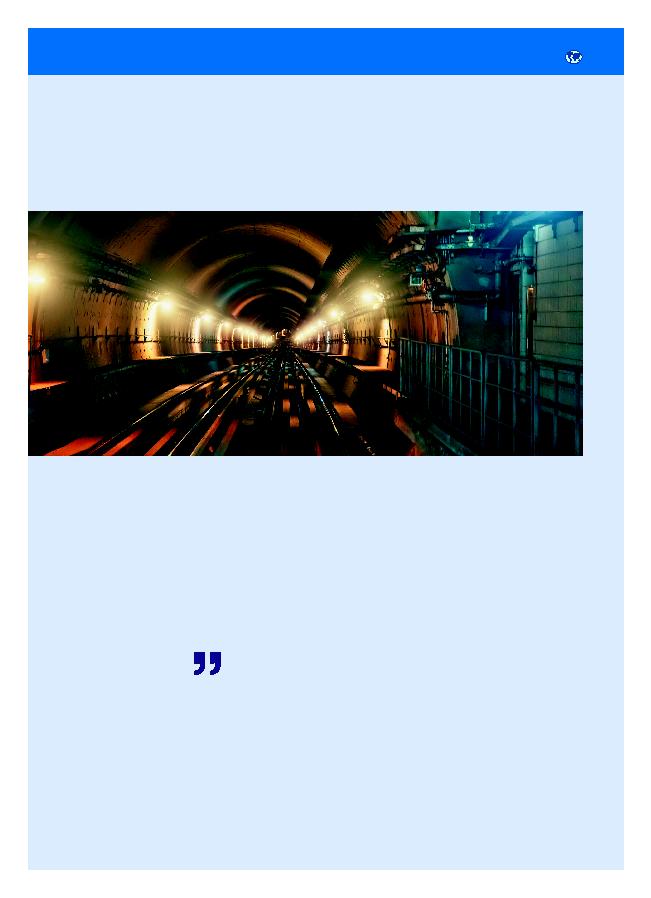
d e t e k t o r i n t e r n a t i o n a l · 2 9
Editor: Lennart Alexandrie
How modern technology safeguards Europe's transport
tunnels
When monitoring a tunnel en-
trance, specific detection criteria or
logic is applied to establish differ-
ent detection zones, the sequence
of alarm triggers, and the size of
an object, which in combination
can determine whether a train,
a person, or a group of people is
entering the tunnel.
"Redscan Lidar sensors can
detect objects across eight different
zones and an area of 100 metres.
They can be configured to recog-
nise objects larger or smaller than
a defined size; for example, they
can ignore trains while detecting
people or overlook small rocks
but identify boulders", says Eelko
Griepink.
If a person or group is detected,
the control centre and train driver
are alerted, allowing the train to
slow down or stop to avoid a strik-
ing a person, a large wild animal or
an obstruction. Additionally, since
the sensors continuously scan the
area, security teams receive the pre-
cise x,y coordinates of any detected
object, enabling a rapid response.
Dark and dirty
Train tracks, when cleaned, throw
up a considerable amount of metal
and oil into the air, which, like
pollution from diesel fumes, can
coat or potentially damage the
cameras and sensors. Dirty cameras
or sensors cannot detect intruders
or incidents, so they need to be
cleaned.
Eelko Griepink says: "The latest
sensors from Optex feature an
algorithm that continuously meas-
ures the return or reflection of the
laser signal, tracking the percentage
of the unit's window that is soiled.
Once a certain level of soiling is
reached, security personnel are
notified."
Optex has also developed a spe-
cial self-healing foil for laser sen-
sors used in underground tunnels,
which protects the laser window
from dust, metal fragments, oil,
and other pollutants. These sensors
can reduce the frequency of secu-
rity personnel's trips to tunnels in
remote locations, helping to lower
operating and maintenance costs.
Eelko Griepink says: "Sensors
are often adapted for different en-
vironments and various uses, so the
correct choice of sensor is essential
to the design of any tunnel security
system."
Designing the right system
Designing the right security
system begins with a survey of
the site and an estimate of how
many cameras and sensors are
needed for the size of the tunnel
to ensure sufficient coverage. The
quality and amount of light at
the openings and along the tun-
nel will help determine whether
dynamic filtering sensors are
needed because they will be unaf-
fected by trains passing or light
bouncing.
In most average European
rail tunnels, for example, laser
sensors are installed on both sides
of the track. With larger tunnels,
there is usually a third set of sen-
sors in the middle between the
tracks. Ultimately, finding the
right solutions and combination
of technologies that are fit for
purpose will vary from tunnel to
tunnel, according to Optex.
Eelko Griepink concludes:
"But continued development and
advancement of new technologies
can only help to enhance safety
and ensure Europe's critical tun-
nels remain open."
Trespassers have learnt that they can
go undetected by moving towards or
entering the tunnel as the train is passing or
deliberately alter their appearance to fool the
analytics software".
With intelligent sensor analysis, lidar technology is not dependent on visible or thermal light, making the method effective for detecting people or animals in the illuminated tunnel
mouth as well as further into the tunnel and along the track.

